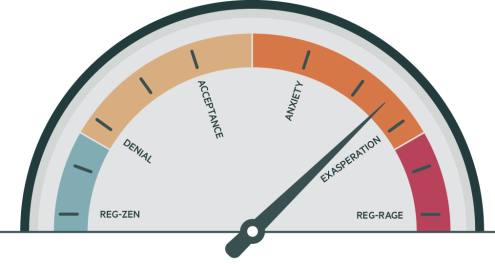In the retail banking industry, distribution is king. The quest for new channels through which to deliver banking products and services continues unabated, with new innovations appearing all the time. In recent years, for example, the mobile phone has emerged as a key and increasingly ubiquitous vehicle for remittances in Asian and African countries, while in the UK, Europe and US, it is beginning to catch on as a full-banking platform.
Meanwhile, the web continues to offer a slew of possibilities, from the now established world of online banking to newer innovations in the field of social networks and collaboration tools. Technology surrounding ATM machines and other self-service channels continues to surprise, with facilities now available for self-service credit applications in Turkey and even initial public offerings in Saudi Arabia.
In all such instances, the retail banking community has harnessed technology to provide tools by which individuals are able, effectively, to service themselves. In an increasingly mobile world, where the rise of both globalisation and immigration continues to scatter populations across the planet, this approach has made perfect commercial sense. Far better, after all, to let the customer own the process and to integrate services into the various contexts in which customers live out their daily lives than constrain them to one location. Like a utility, many commentators argue, banking services should be on-tap, or accessible through the ‘light switch’: multiple channels help to drive this approach, allowing banking services to be hyper-accessible, and effortless to exploit.
Faceless wonders
But this channel model has not been without its difficulties, or – indeed, its contradictions. To a very large extent, the multi-channel, multi-context model has freed the customer, and enhanced their satisfaction levels. But it has also undermined the relationship between an individual and any one bank: faced with the webpage, the mobile phone interface and the ATM screen, the customer rarely catches a glimpse of the organisation that sits behind these platforms.
When delivered through an ATM operated by a competing bank, or through a particular mobile phone carrier, or indeed as with many developments now, a multi-bank network, it is increasingly difficult for individual banks to reinforce their brand and its value to its customers.
Meanwhile, internally the model presents the recurring problem of integration. For those banks, especially in rapidly emerging markets, that have rushed to roll-out new products based on standalone systems, the task of integrating multiple IT platforms is formidable.
Perhaps more importantly, market forces – in the form of growing regulatory pressure – are starting to push against the philosophy and culture of the multi-channel, self-service model. In recent years, regulatory bodies such as the UK’s Financial Services Authority (FSA) have steadily begun to bear down on organisations that have proved themselves ill-equipped to understand, visualise and adequately communicate with their customers, in a way that demonstrates in principle that they are being treated fairly.
Indeed, the rise of Treating Customer Fairly principles – particularly in the wake of the personal debt crisis in the UK – seems well positioned to force the banks to rethink, at least in part, their channel strategy. By December this year, all financial institutions offering retail products and services will have to be able to demonstrate to the FSA the ability to treat all customers consistently and fairly: this is no small task in a multi-channel environment.
First, the practical issue of gaining visibility on exactly what a customer is doing, in order to build a 3-D aggregated view, is extremely demanding from both a process and technology point of view as Kieran Kilmartin, product director at software company Portrait Sofware, explains overleaf. Second, it will demand a fundamental change in the culture and philosophy of the multi-channel banking model, which seeks only to offer products and services in every context, with scant regard as to the suitability of that product or service to a particular individual.
It is no longer enough that the bank can deliver a service, under any circumstance, in any country, through multiple vehicles: it must now ensure that the service or product is both appropriate and its nature fully understood by the customer in question. In short, the banks must – to a very large extent – revert to the traditional bank manager/customer relationship of years past.
This, however, must be operated on a large scale at low cost. Technology, again, it seems, will be the answer. But which technologies remains to be seen.






